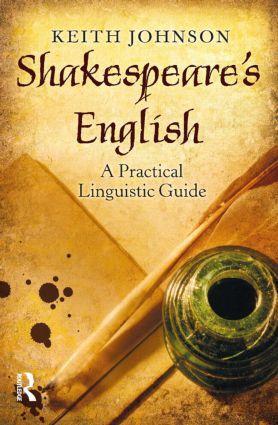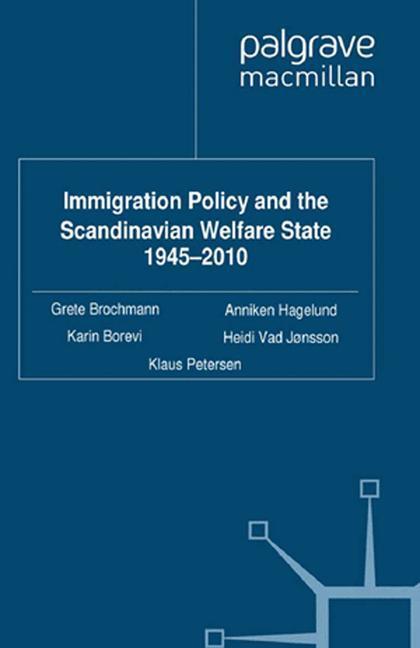45,50 €*
Versandkostenfrei per Post / DHL
Aktuell nicht verfügbar
Keith Johnson has published widely in the area of applied linguistics, including Introduction to Foreign Language Learning and Teaching (Pearson Education, 2008). He has many years of experience in directing MA level courses for participants coming from all over the world, and is now Emeritus Professor of Linguistics and Language Education at Lancaster University.
Author's acknowledgements
Publisher's acknowledgements
Chronology of Shakespeare's works
Phonetic symbols used
1. Why, What, and How
1.1. Shakespeare's language? Why study it?
1.2 What is Shakespeare's language like? An initial look
1.3 How hard is Shakespeare's English?
1.4 Something about this book and how to use it
1.5 Shakespeare's English? Which Shakespeare?
Whose English?
2. Inventing Words: The 'great feast of languages'
2.1 Admiring Shakespeare's vocabulary
2.2 The Renaissance and words
2.3 Shakespeare's word coining
2.4 Shakespeare and the spirit of the age
3. Using Words: The fatal Cleopatras
3.1 Playing with words
3.2 'Kitchen diction'
3.3 'Never-broken chain of imagery'
3.4 Words then and now: historical false friends
3.5 Register, and other levels of variation
3.6 Fine volleys of words
4 Grammar: Inside the bonnet
4.1 Grammar and cars
4.2 Expressing grammatical information
4.3 Shakespeare as 'half-way house'
4.4 Shakespeare: an initial look inside the bonnet
4.5 The noun phrase
4.6 The verb phrase
4.7 Towards today
5. Pragmatics: Shakespeare as a foreign language
5.1 What pragmatics is
5.2 Working out pragmatic meaning: exclamations
5.3 How to be polite in Shakespeare
5.4 A speech act: directives
5.5 Thou and you (and ye)
5.6 Implicature
5.7 The need for pragmatic awareness
6. Rhetoric: 'Sweet and honeyed sentences'
6.1 Complicated sentences
6.2 Compound and complex sentences
6.3 The history of rhetoric in a nutshell
6.4 Some Renaissance styles
6.5 Rhetorical devices
6.6 Energy and growth
7. Verse and Prose: Iambic pentameters all the time?
7.1 Blank verse
7.2 Verse and prose
7.3 Blank, rhyme and prose: the mix
8. Shakespeare on the Page: 'Wryting englysh treu'
8.1 Taste and fancy
8.2 Spelling
8.3 Punctuation
8.4 A look at the First Folio
8.5 Variation and standardisation
9. Sounds: The 'tongue's sweet melody'
9.1 How different . . . and why bother?
9.2 A first look (or listen)
9.3 Looking at some consonants
9.4 Some vowels and diphthongs
9.5 Some EModE pronunciation 'practice drills'
9.6 Shakespearean pronunciation: how do we know?
9.7 More on puns and homophones
9.8 Stress
9.9 Pronunciation and comprehension
10. Our revels now are ended
10.1 Language points in one passage
10.2 After the revels
Glossary
References
Index
| Erscheinungsjahr: | 2013 |
|---|---|
| Rubrik: | Sprachwissenschaft |
| Medium: | Taschenbuch |
| Seiten: | 336 |
| ISBN-13: | 9781408277355 |
| ISBN-10: | 1408277352 |
| Einband: | Kartoniert / Broschiert |
| Autor: | Johnson, Keith |
| Besonderheit: | Unsere Aufsteiger |
| Hersteller: | Taylor & Francis Ltd |
| Maße: | 233 x 154 x 22 mm |
| Von/Mit: | Keith Johnson |
| Erscheinungsdatum: | 28.03.2013 |
| Gewicht: | 0,508 kg |
Keith Johnson has published widely in the area of applied linguistics, including Introduction to Foreign Language Learning and Teaching (Pearson Education, 2008). He has many years of experience in directing MA level courses for participants coming from all over the world, and is now Emeritus Professor of Linguistics and Language Education at Lancaster University.
Author's acknowledgements
Publisher's acknowledgements
Chronology of Shakespeare's works
Phonetic symbols used
1. Why, What, and How
1.1. Shakespeare's language? Why study it?
1.2 What is Shakespeare's language like? An initial look
1.3 How hard is Shakespeare's English?
1.4 Something about this book and how to use it
1.5 Shakespeare's English? Which Shakespeare?
Whose English?
2. Inventing Words: The 'great feast of languages'
2.1 Admiring Shakespeare's vocabulary
2.2 The Renaissance and words
2.3 Shakespeare's word coining
2.4 Shakespeare and the spirit of the age
3. Using Words: The fatal Cleopatras
3.1 Playing with words
3.2 'Kitchen diction'
3.3 'Never-broken chain of imagery'
3.4 Words then and now: historical false friends
3.5 Register, and other levels of variation
3.6 Fine volleys of words
4 Grammar: Inside the bonnet
4.1 Grammar and cars
4.2 Expressing grammatical information
4.3 Shakespeare as 'half-way house'
4.4 Shakespeare: an initial look inside the bonnet
4.5 The noun phrase
4.6 The verb phrase
4.7 Towards today
5. Pragmatics: Shakespeare as a foreign language
5.1 What pragmatics is
5.2 Working out pragmatic meaning: exclamations
5.3 How to be polite in Shakespeare
5.4 A speech act: directives
5.5 Thou and you (and ye)
5.6 Implicature
5.7 The need for pragmatic awareness
6. Rhetoric: 'Sweet and honeyed sentences'
6.1 Complicated sentences
6.2 Compound and complex sentences
6.3 The history of rhetoric in a nutshell
6.4 Some Renaissance styles
6.5 Rhetorical devices
6.6 Energy and growth
7. Verse and Prose: Iambic pentameters all the time?
7.1 Blank verse
7.2 Verse and prose
7.3 Blank, rhyme and prose: the mix
8. Shakespeare on the Page: 'Wryting englysh treu'
8.1 Taste and fancy
8.2 Spelling
8.3 Punctuation
8.4 A look at the First Folio
8.5 Variation and standardisation
9. Sounds: The 'tongue's sweet melody'
9.1 How different . . . and why bother?
9.2 A first look (or listen)
9.3 Looking at some consonants
9.4 Some vowels and diphthongs
9.5 Some EModE pronunciation 'practice drills'
9.6 Shakespearean pronunciation: how do we know?
9.7 More on puns and homophones
9.8 Stress
9.9 Pronunciation and comprehension
10. Our revels now are ended
10.1 Language points in one passage
10.2 After the revels
Glossary
References
Index
| Erscheinungsjahr: | 2013 |
|---|---|
| Rubrik: | Sprachwissenschaft |
| Medium: | Taschenbuch |
| Seiten: | 336 |
| ISBN-13: | 9781408277355 |
| ISBN-10: | 1408277352 |
| Einband: | Kartoniert / Broschiert |
| Autor: | Johnson, Keith |
| Besonderheit: | Unsere Aufsteiger |
| Hersteller: | Taylor & Francis Ltd |
| Maße: | 233 x 154 x 22 mm |
| Von/Mit: | Keith Johnson |
| Erscheinungsdatum: | 28.03.2013 |
| Gewicht: | 0,508 kg |











